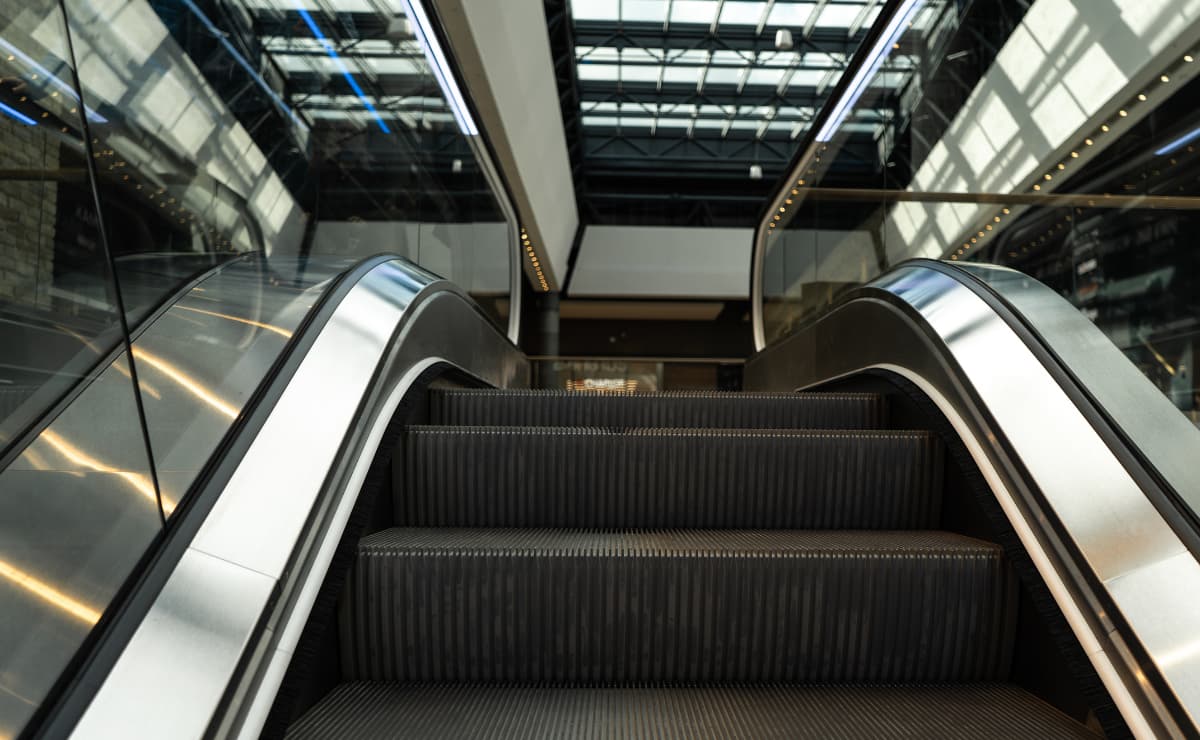For many years, America’s shopping centers have been part of our daily basis activities. Whatever city you go, whatever state, at any time, you can find a shopping mall or plaza with the stores you need. But something is changing: hundreds of them are closing their doors forever. These (sometimes) miles-long retail spaces that are now closed are a memory worth remembering. Let’s review some of New Jersey’s most well-known malls that are gone forever and where your parents or grandparents probably regularly shopped. Although they were once very famous and in demand, times have changed, and the market has transformed. That is why many shopping mall chains are closing their doors.
One of these centers is Steinbach. It was once a chain of department stores located throughout northeastern New Jersey. It was headquartered in Asbury Park, and its origins date back to the 1870s. Steinbach was founded by the Steinbach brothers, John, Henry, and Jacob, in Long Branch. After a few years, this chain expanded and gained much more fame and recognition. At its peak, this mall chain was considered the largest department store in the world. After a few decades in business, Steinbach’s eventually closed its doors in 1999, at the end of the 20th century.
Shopping malls in New Jersey that no longer exist
The Wiz was another of the most successful chains in New Jersey during the last century. It was a chain of electronic stores located in New York and Pennsylvania. After a long and prosperous trajectory, it declared bankruptcy in 1998. Cablevision company bought it for $80 million. However, The Wiz’s last active store remained open until 2003.

Continuing with large shopping mall chains, here we are, Bamberger’s. At the time, it was a major chain of New Jersey stores headquartered in Newark. The decade of its greatest success and expansion was during the 1960s and 1970s, when it opened stores in Philadelphia. As the population of northern New Jersey grew, Bamberger launched ‘suburban branches’ of L. Bamberger & Co. In areas much more accessible to all, such as Morristown, Plainfield, and Princeton.
Unlike the previous chains, it has remained in business under a name we know very well today: Macy’s Northeast.
Another shopping center that became extinct at the end of the 1990s is Rickel. The first store of this chain was opened in 1953. It was one of the most famous hardware, plumbing, heating, and electrical stores for the next thirty years. At its peak, more than 90 stores were in operation. However, competition with stores such as Home Depot caused it to go bankrupt in 1996. However, it managed to stay in business until early 1998.
There was another shopping center more focused on low prices, like Woolworth’s case. This business was founded on February 22, 1879. It was characterized as one of the first stores in which prices were five and ten cents. At the time, Woolworth was one of the first retailers to offer merchandise to its customers without a sales clerk.
It was finally closed in 1997 when the company changed its name to Foot Locker. Although it is important to note that, currently, a Woolworth store remains open in Bakersfield, California. It is an antique store and keeps a restaurant.
Burlington Center Mall
The Burlington Center Mall has become obsolete, meaning it no longer provides profitable services for the shops, which decided to be closing many years ago, prior to the demolition of the whole complex.
Its closure started on January 8, 2018, when the only store remaining, Sears, decided to finaly put an end to the long, tortuous, death. The mall was originally built in 1982, and propitiated a boom in the area: It came to be as big as 800,000 sq ft (74,000 m2).
There was an important sculpture in its center, “The Elephant Fountain”, by American artist Zenos Frudakis. The playful elephant is spraying water onto life-size 10-year-old boy. The elephant fountain was originally commissioned by Stockton Strawbridge, the scion of the Strawbridge and Clothier retail empire. Strawbridge had just returned from Africa and wanted children to be as thrilled by the elephant as he was. Petal made her debut at the Burlington Center Mall in the summer of 1982. When the mall opened, it hosted 100 stores and restaurants. But, when the mall was demolished, the sculpture disappeared with it.
The dead malls of America
A dead mall is a concept that is mostly used in the United States. In no other country there are as many shopping malls as in our country, this being a business model that was once predominant but is now in decline. It is also popularly called “zombie mall” or “abandoned mall”, and it is the saddest ending of these places that once generated millions of jobs.
It can even be considered “dead” when the number of commercial premises does not make the complex as a whole economically sustainable, because of the decline of the ammount of people that comes in to shop, eat or watch a movie (since there are some that also have movie cinemas).
The COVID-19 pandemic aggravated the problems that already had the shopping centers that were dying. Several notable retailers filed for bankruptcy protection during the pandemic, including Ascena Retail Group, Brooks Brothers, GNC, JCPenney, Lord & Taylor and Neiman Marcus. These types of shops are the so-called “anchor stores”, which attract most of the traffic to the hallways of the complex, which bounce into other smaller shops and purchase other items.
Currently, there are less than 700 shopping centers or malls in all the United States, down from over 2,500 back in the 1980s. According to estimations, there will be less than 150 in ten years, a closure of 40,000-50,000 retail stores that will disappear or mutate to online services.